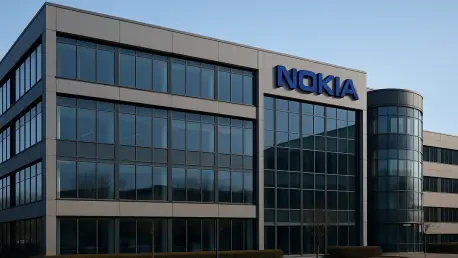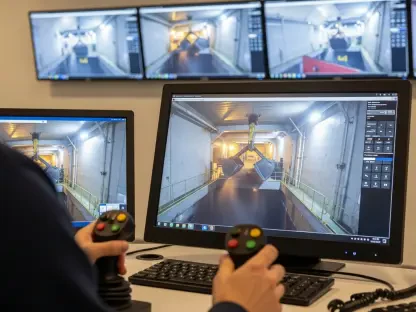The recent collaboration between tech giant Nokia and Saudi telecom operators Zain and Mobily marks a significant milestone in wireless communication as they embark on testing an indoor 5G Standalone network. At the forefront of this initiative is the aim to revolutionize 5G deployment by leveraging shared spectrum in the 4.0–4.1 GHz band, which signals a transformative approach to providing high-speed connectivity. By working in conjunction with the Saudi Arabia Communications, Space & Technology Commission (CST) and the neutral host provider ACES NH, the collaboration has achieved a first for Saudi Arabia, where all telecom operators can deliver indoor 5G through a single, cohesive system. This endeavor underscores an effort to eliminate the need for multiple sets of equipment and outdated 4G infrastructure, achieving a substantial reduction in deployment costs by over 60% as well as reducing carbon emissions per gigabyte, thus fostering sustainable technological progress.
Streamlining 5G Infrastructure
The utilization of Nokia’s Shikra radios and the multi-operator core network (MOCN) software takes center stage in this groundbreaking initiative. The shared infrastructure model allows the provision of both public and private 5G services, making it possible to enhance coverage within medium-traffic environments such as office buildings and shopping malls. This approach ensures reliable and efficient 5G connectivity without the complexity of distributed antenna systems (DAS). By facilitating the use of shared networks, the initiative promotes a streamlined process for deploying high-speed connectivity, leading to broader adoption and integration of 5G services across varied sectors. Enterprises, public venues, and smart city infrastructure stand to benefit from the advancements, which emphasize not only boosting connectivity but also paving the way for environmentally conscious technology.
The test of this shared 5G network is a strategic move that paves the way for broader global implementation. The initiative highlights a growing trend toward utilizing shared networks to achieve widespread 5G integration. Companies are increasingly recognizing the advantages of collaboration, such as reducing costs and resource use, fostering a more environmentally sustainable approach. This strategy is particularly vital in locations with medium traffic, where the demand for robust and efficient connectivity is ever-increasing. By eliminating repetitive infrastructure, telecom operators can focus their resources on improving service quality and availability, thus contributing to a more connected and sustainable technological ecosystem.
Economic and Environmental Impact
From an economic perspective, the shared indoor 5G network model offers a compelling case for reduced expenditures, benefiting telecom operators and consumers alike. Decreasing deployment costs by over 60% not only translates to a more profitable business model for companies involved but also holds promise for more affordable consumer experiences. By optimizing resources and infrastructure, this pioneering initiative minimizes investment risks while maximizing potential returns in terms of service deployment and consumer reach. Moreover, this model aligns with broader global trends toward sustainability, cutting carbon emissions per gigabyte, and striking a balance between technological advancement and environmental responsibility.
The test’s emphasis on greener technology presents noteworthy implications for the industry’s future, prompting other global telecom providers to consider similar paths. As carbon footprint considerations become increasingly vital, projects like this will be instrumental in pushing the envelope toward cleaner, more sustainable technological solutions. By pioneering such advancements, Saudi Arabia sets a precedent for other nations, showcasing the tangible benefits of shared infrastructure. Innovations such as these can redefine the landscape of telecommunication by inspiring further strides towards sustainability and efficiency on a global scale, encouraging other entities to adapt and evolve in their approach to network deployment and management.
Advancements in Connectivity Solutions
Nokia’s Shikra radios and MOCN software are at the forefront of an innovative endeavor that uses shared infrastructure to deliver both public and private 5G services. This model is particularly effective in medium-traffic areas like office buildings and shopping malls, ensuring dependable 5G connectivity without the need for complex distributed antenna systems. By implementing shared networks, this initiative simplifies the deployment of high-speed connectivity, encouraging the widespread adoption of 5G across diverse industries. Businesses, public spaces, and smart city infrastructures stand to gain significantly, not only in terms of enhanced connectivity but also in advancing eco-friendly technologies.
Testing the shared 5G network is a strategic move that sets the stage for global implementation, underscoring a trend towards using shared networks for extensive 5G integration. Companies are seeing the benefits of collaboration, including lower costs and minimized resource usage, promoting sustainability. This strategy is crucial for medium-traffic zones where demand for reliable connectivity is growing, allowing telecom operators to refine service quality while fostering a sustainable tech ecosystem.









